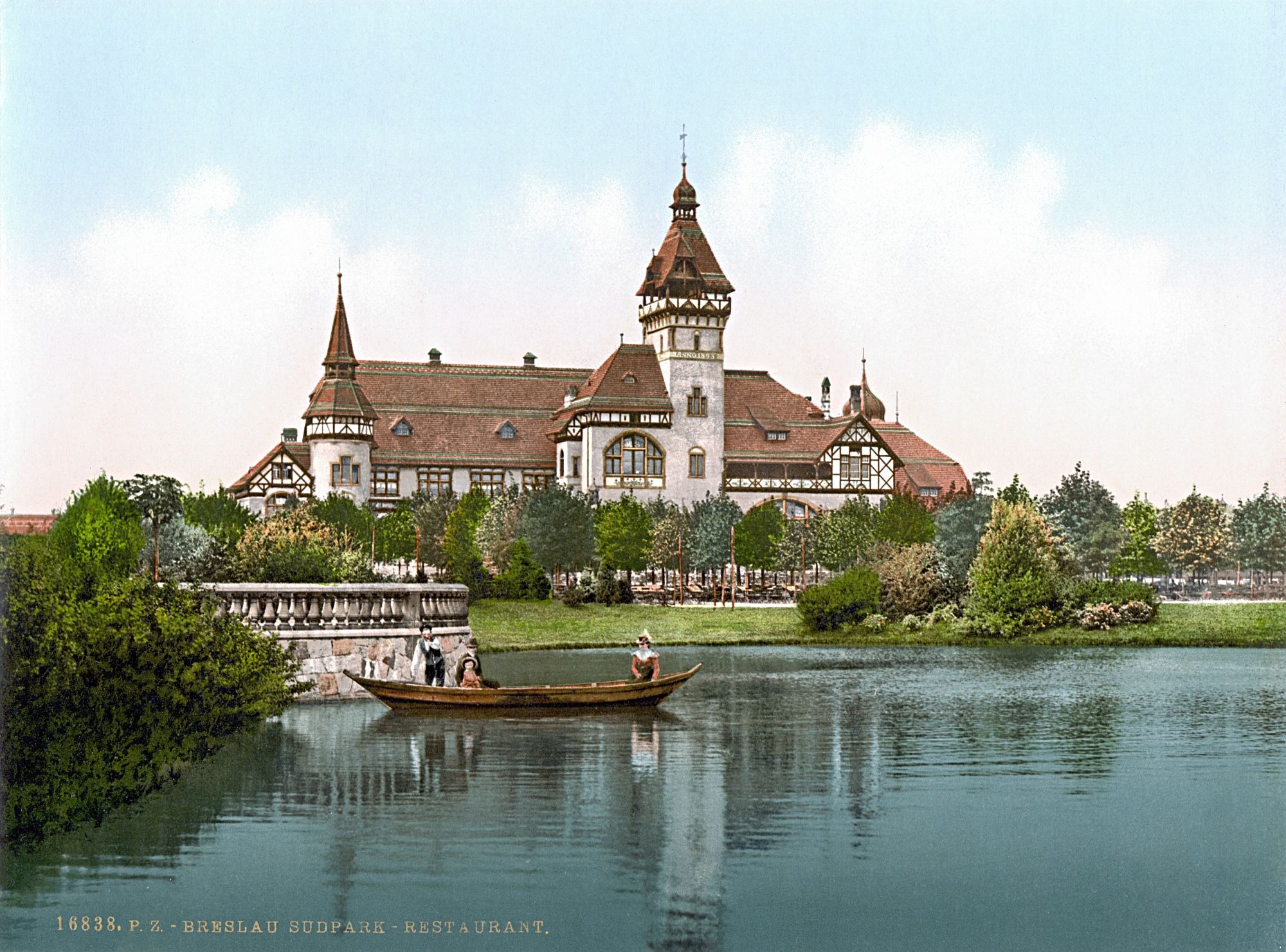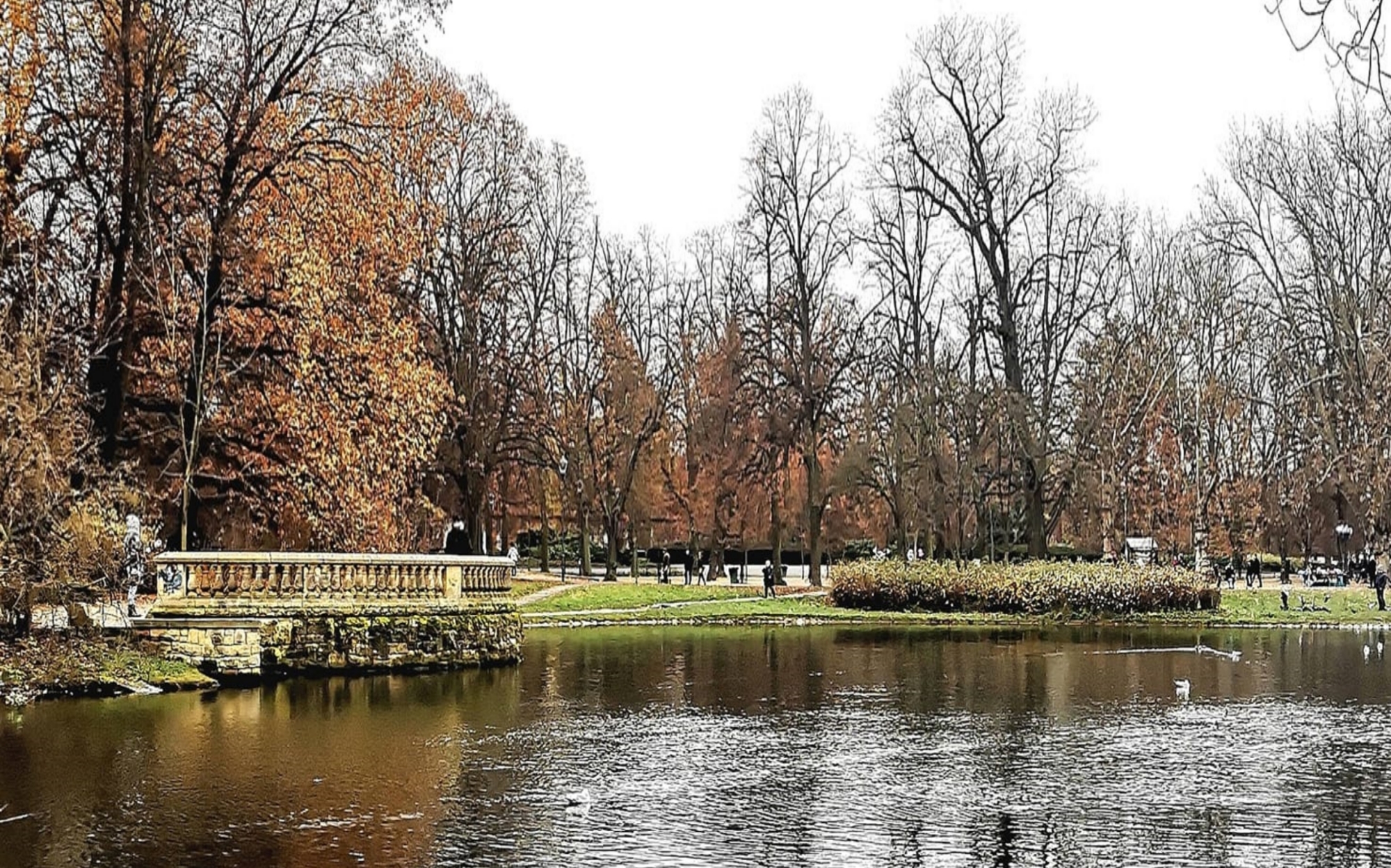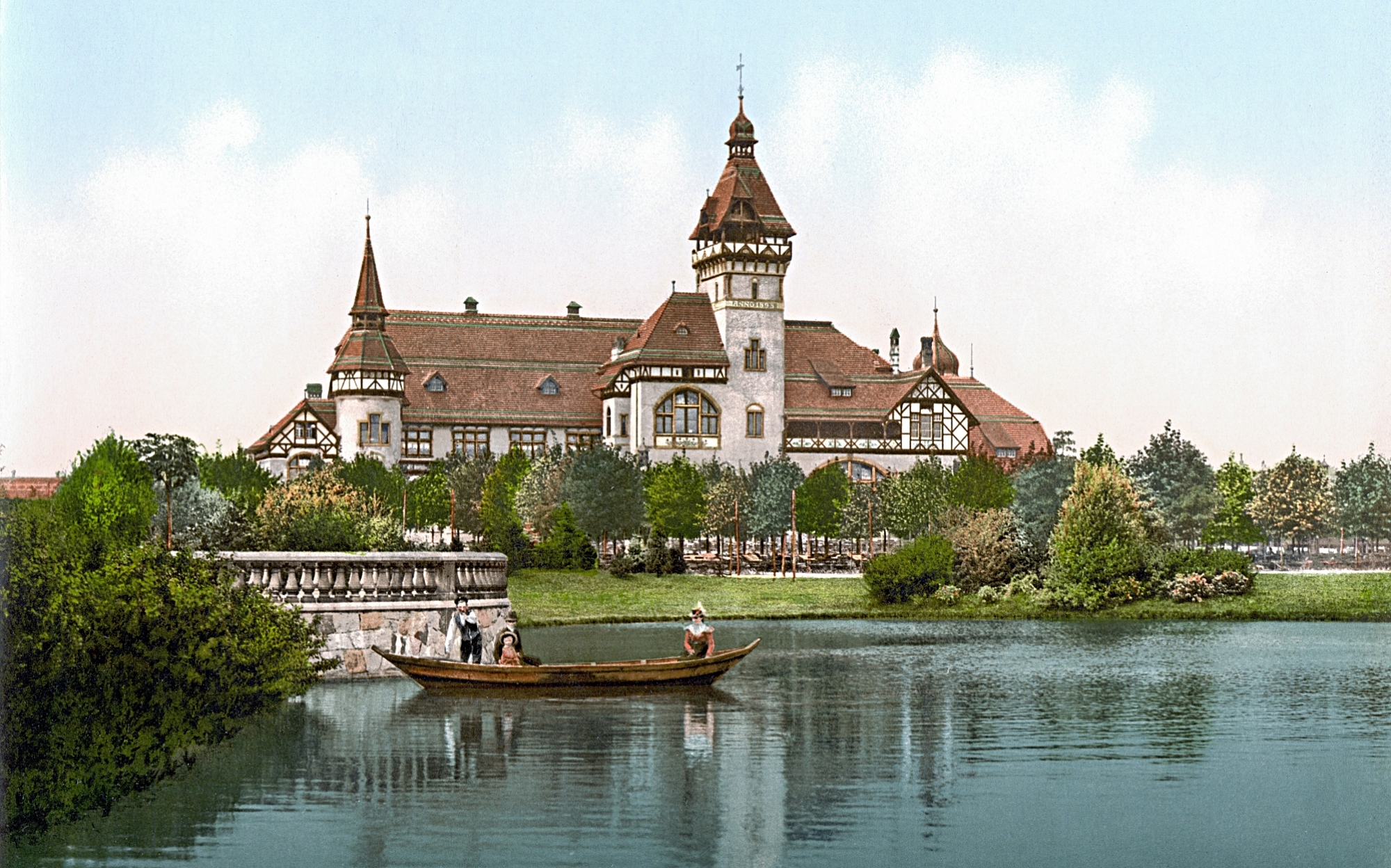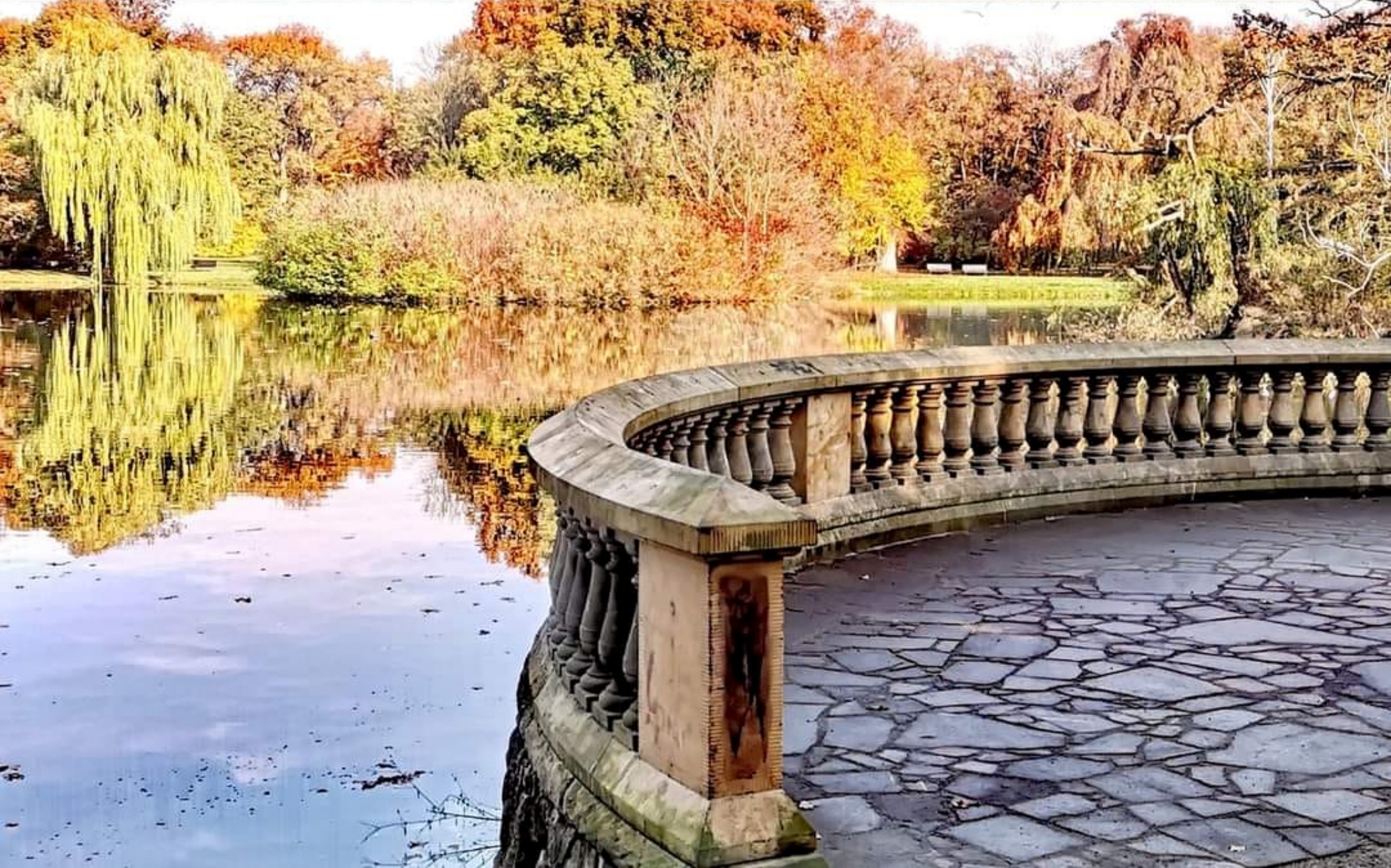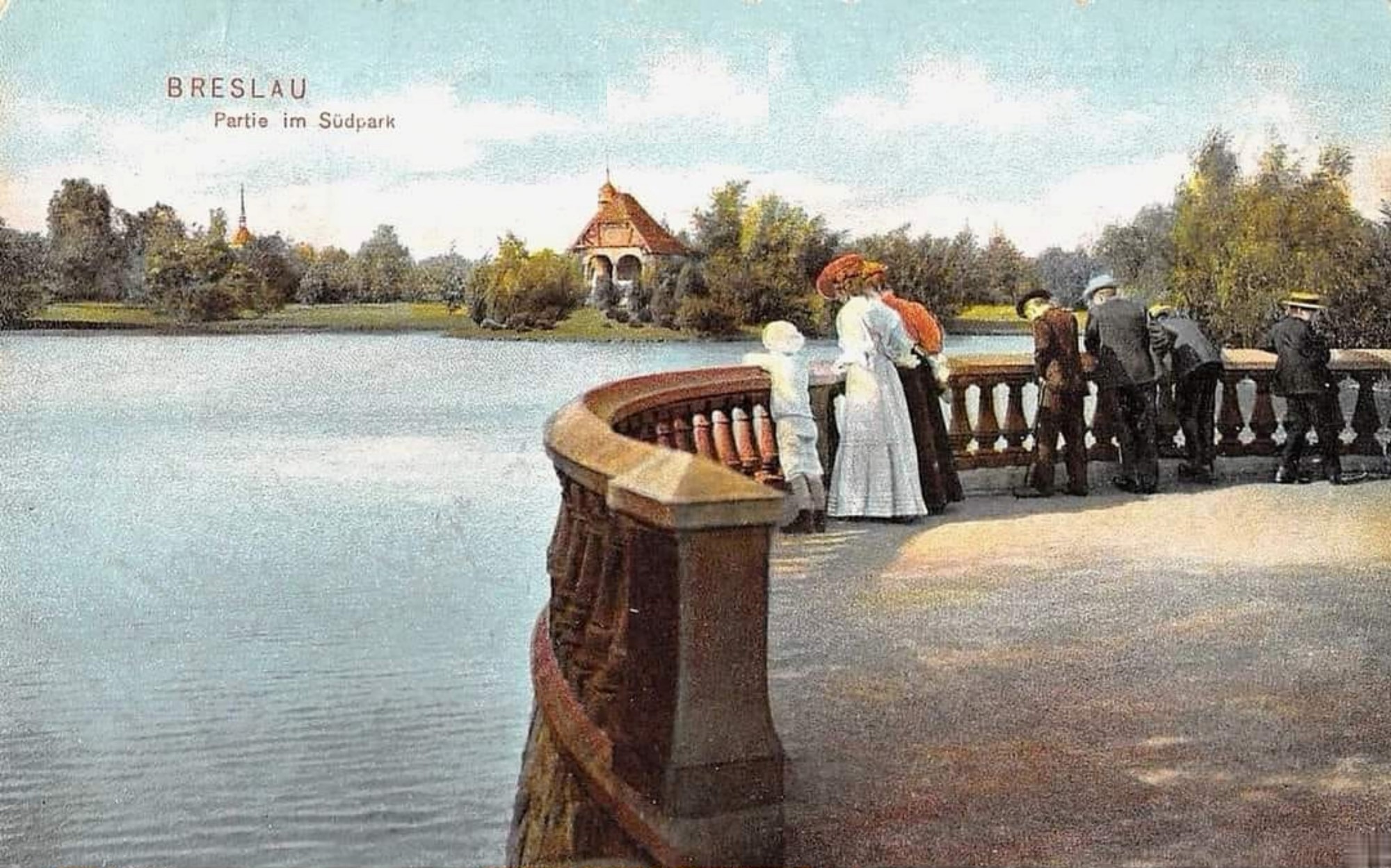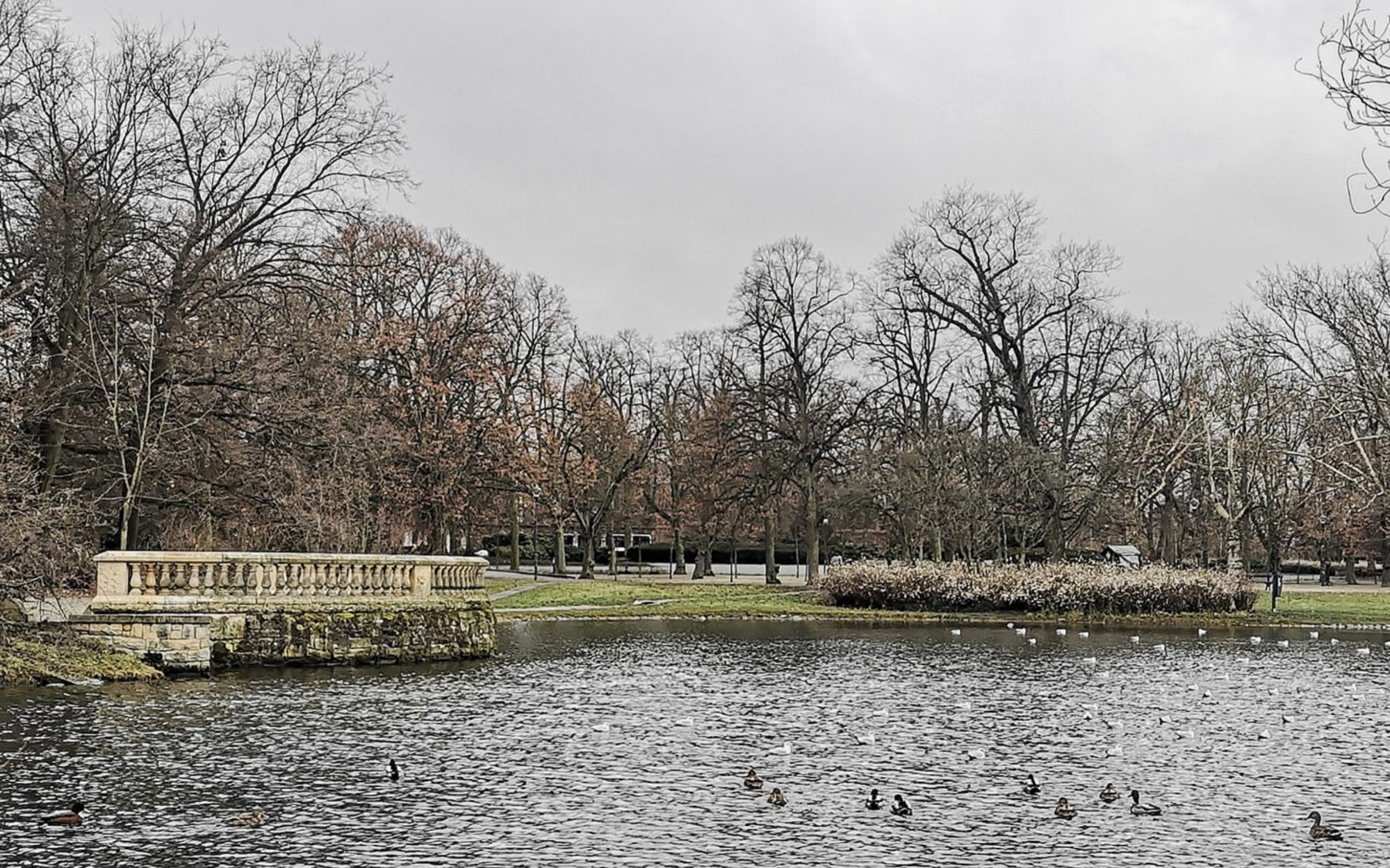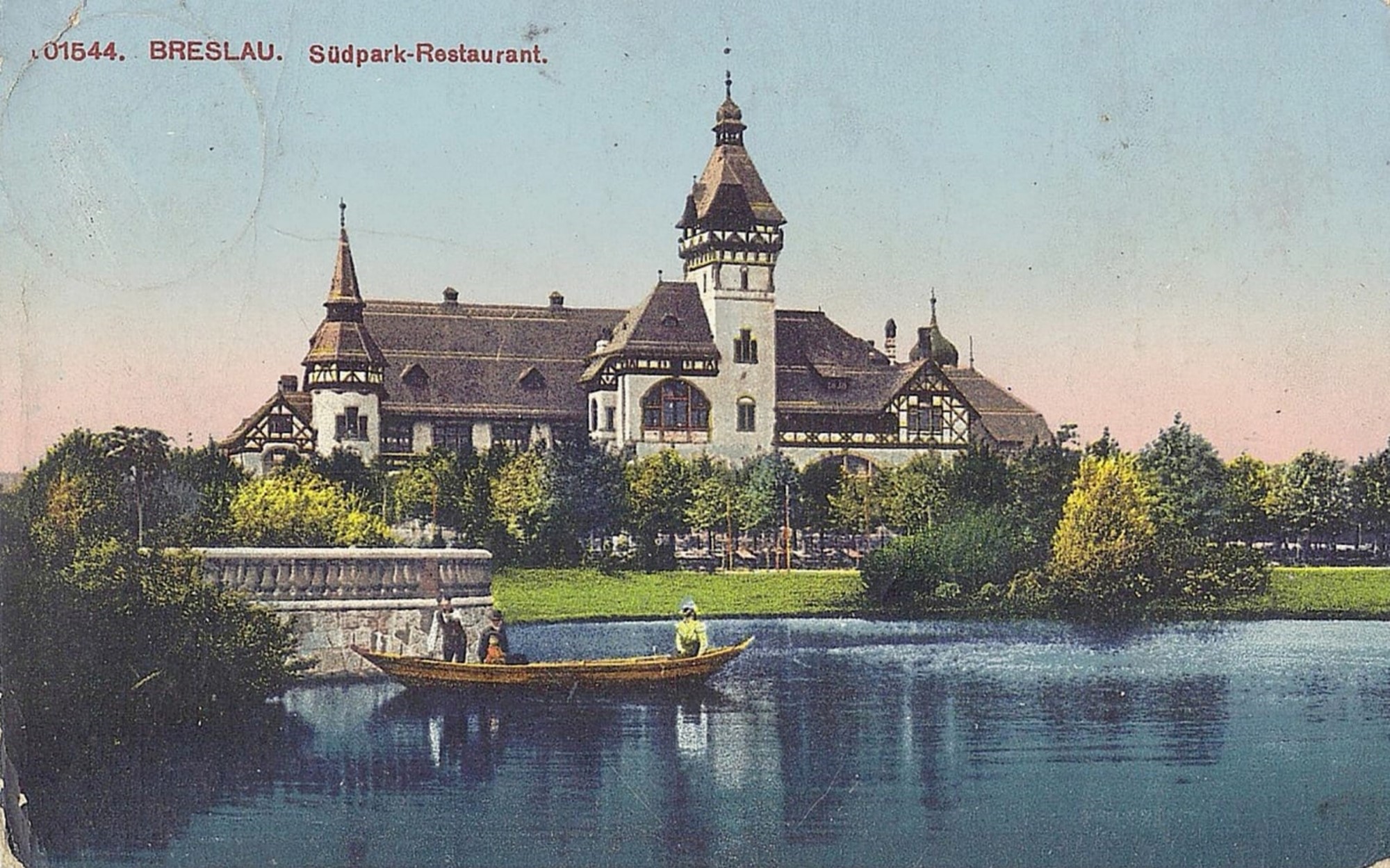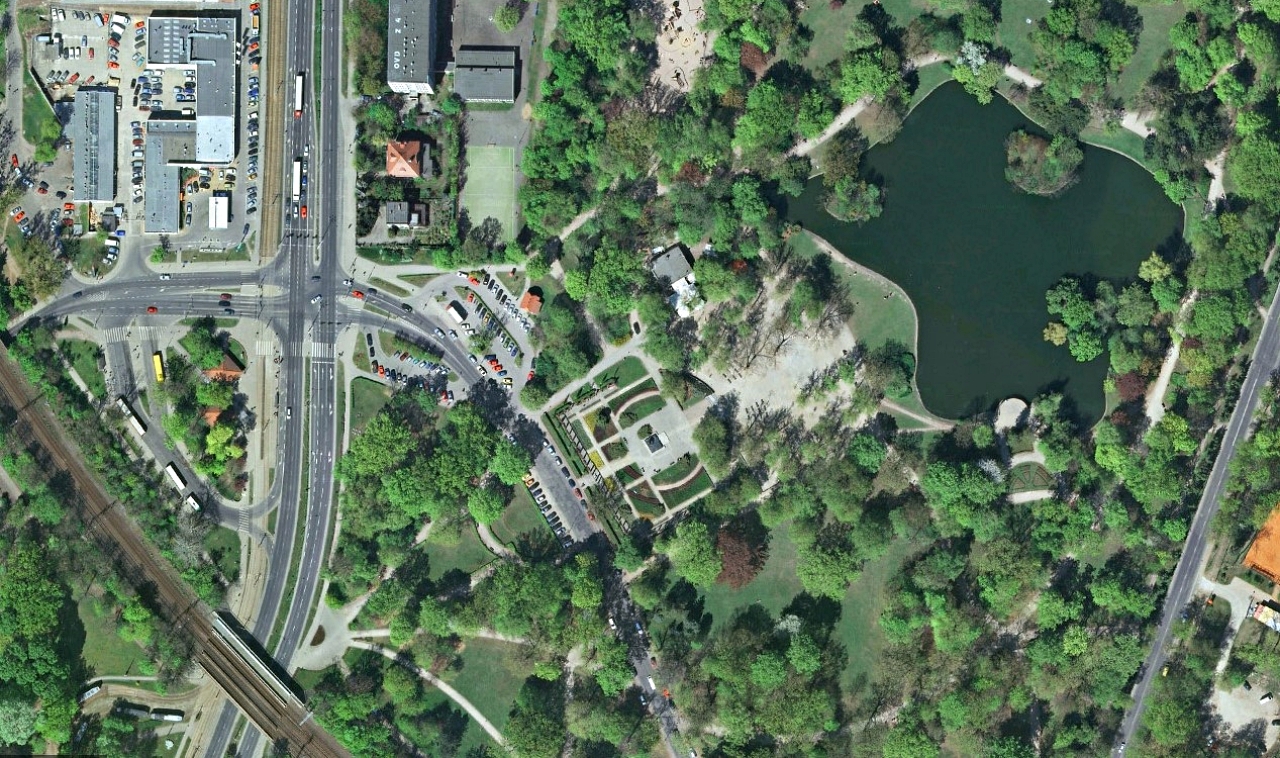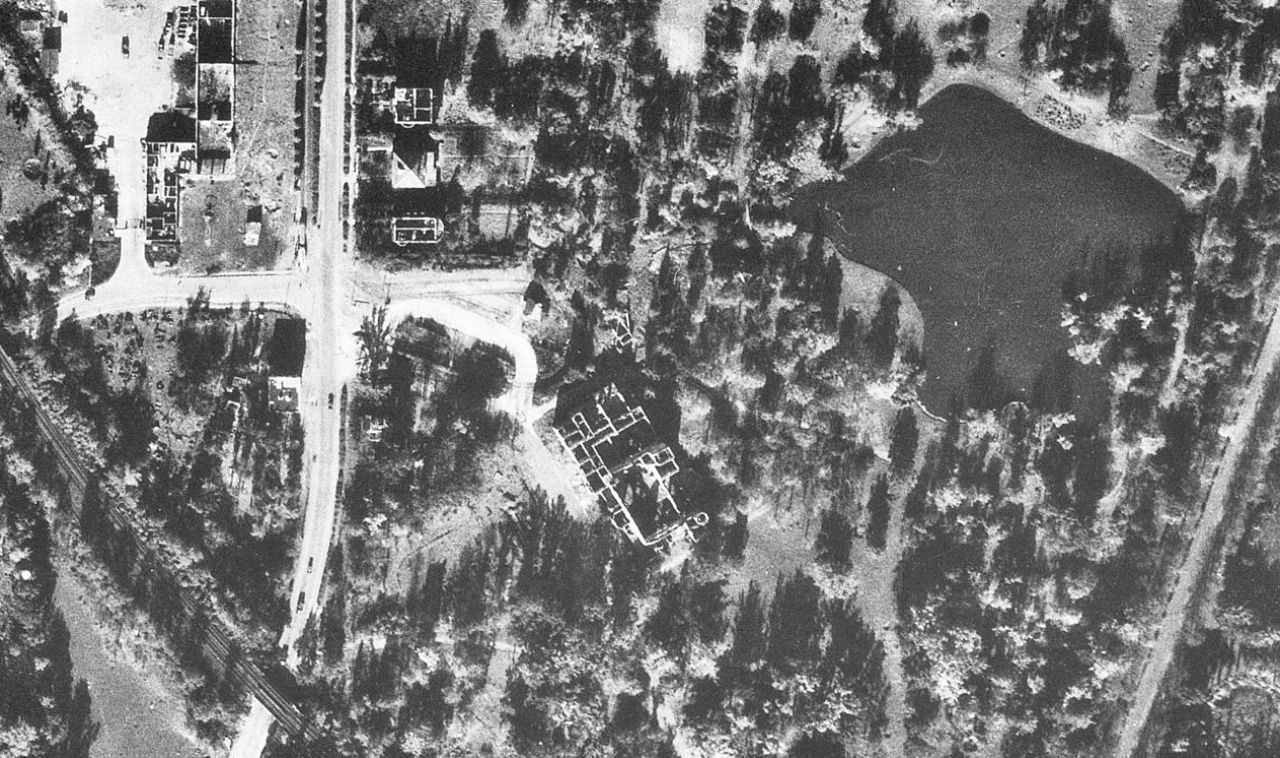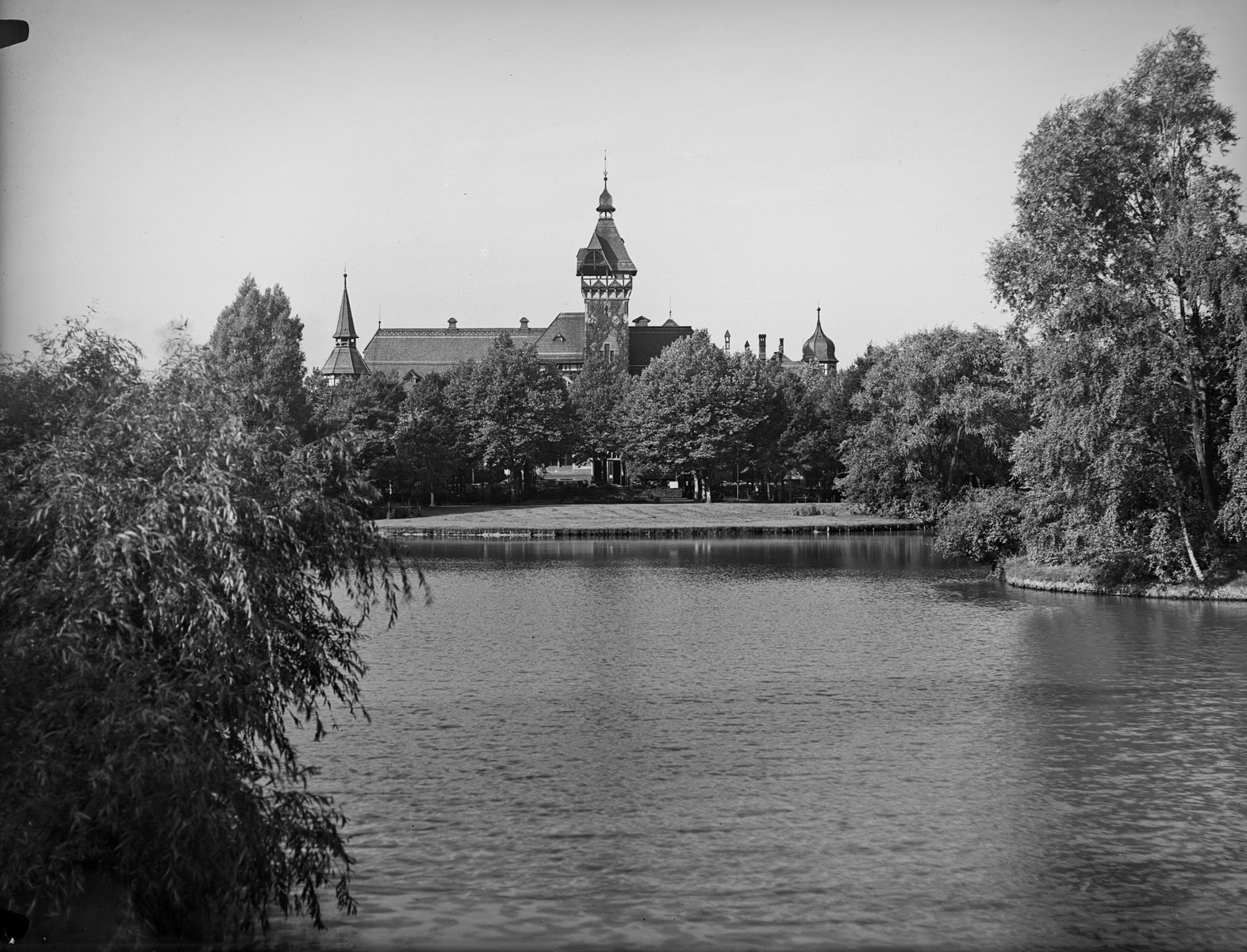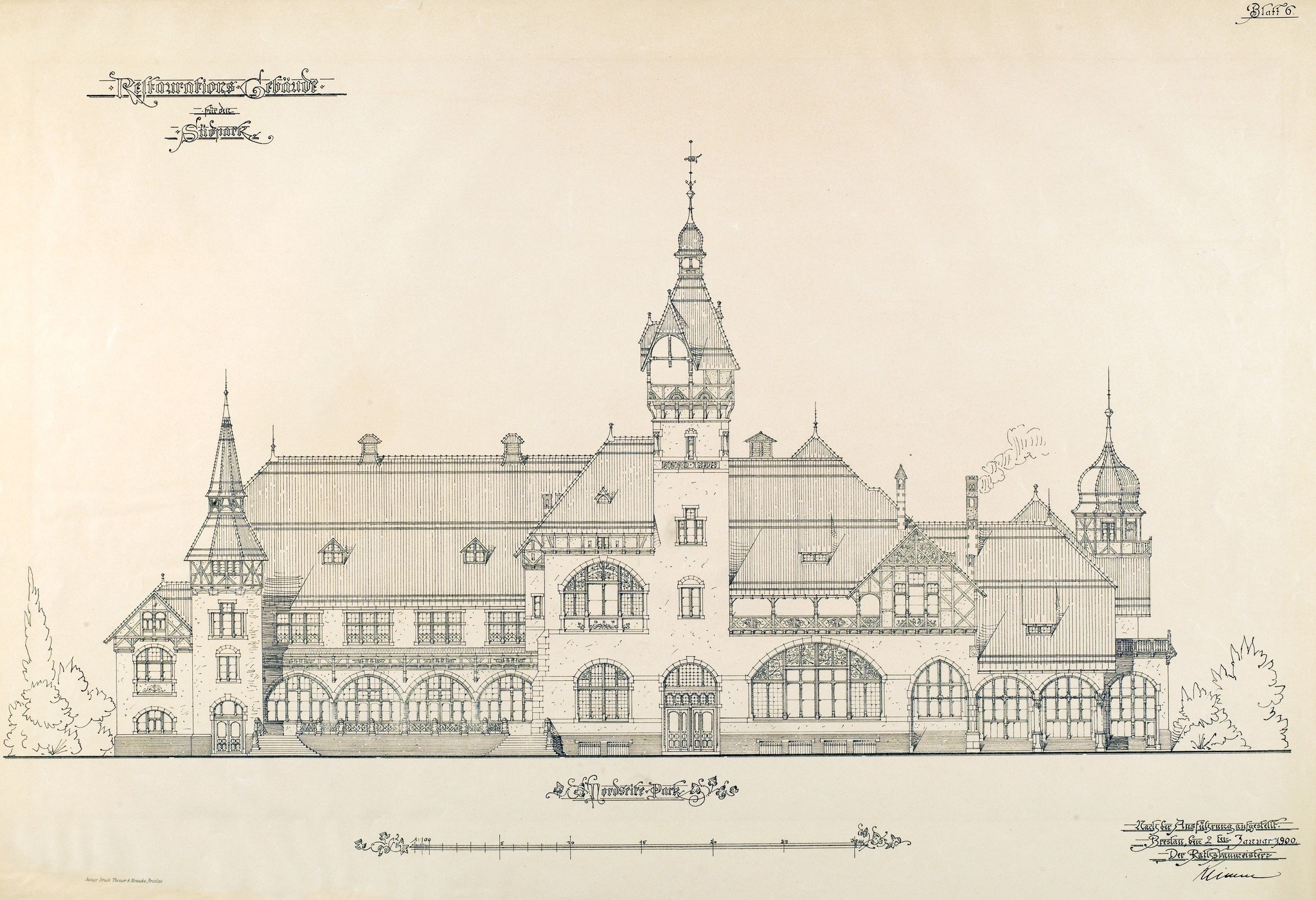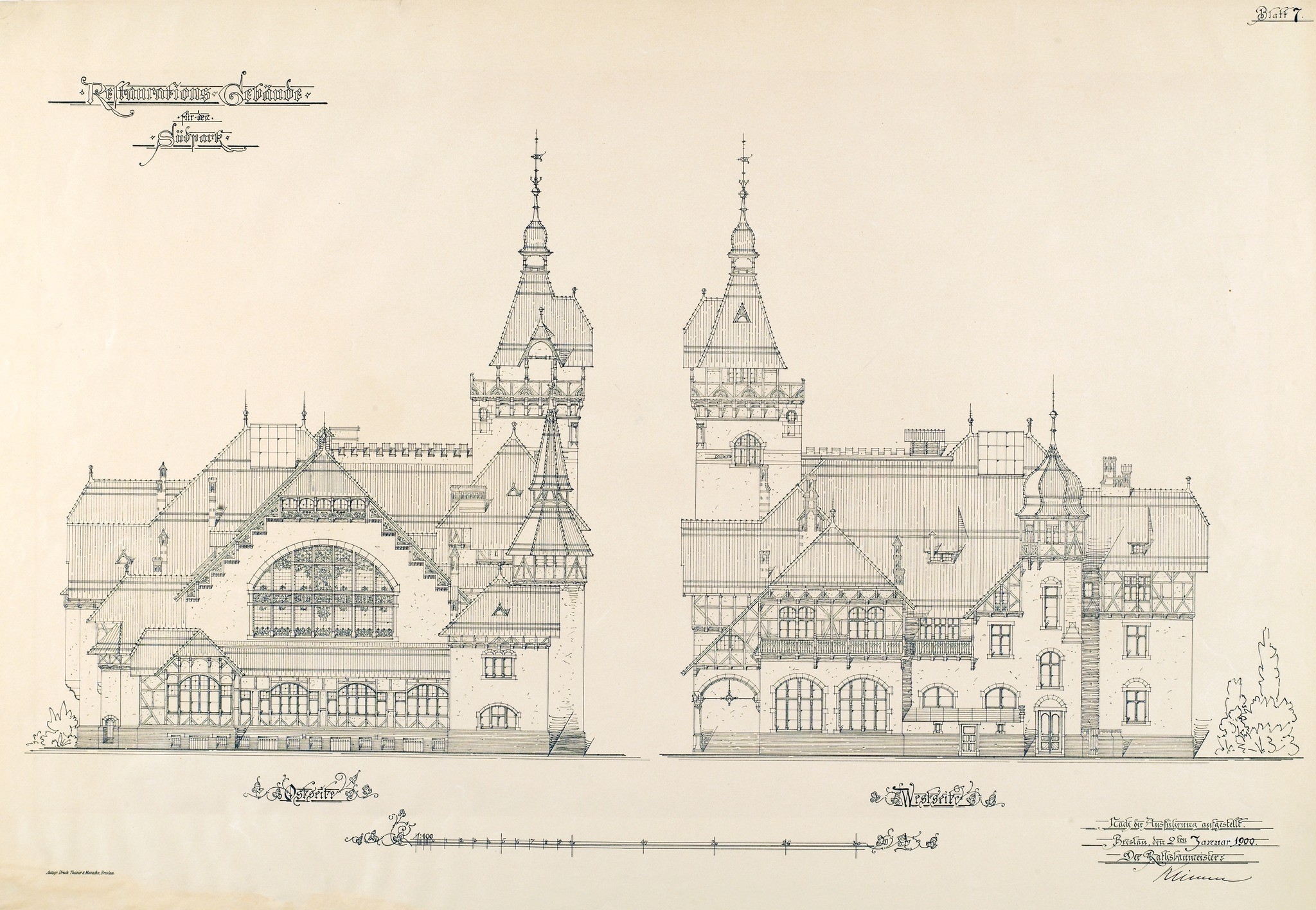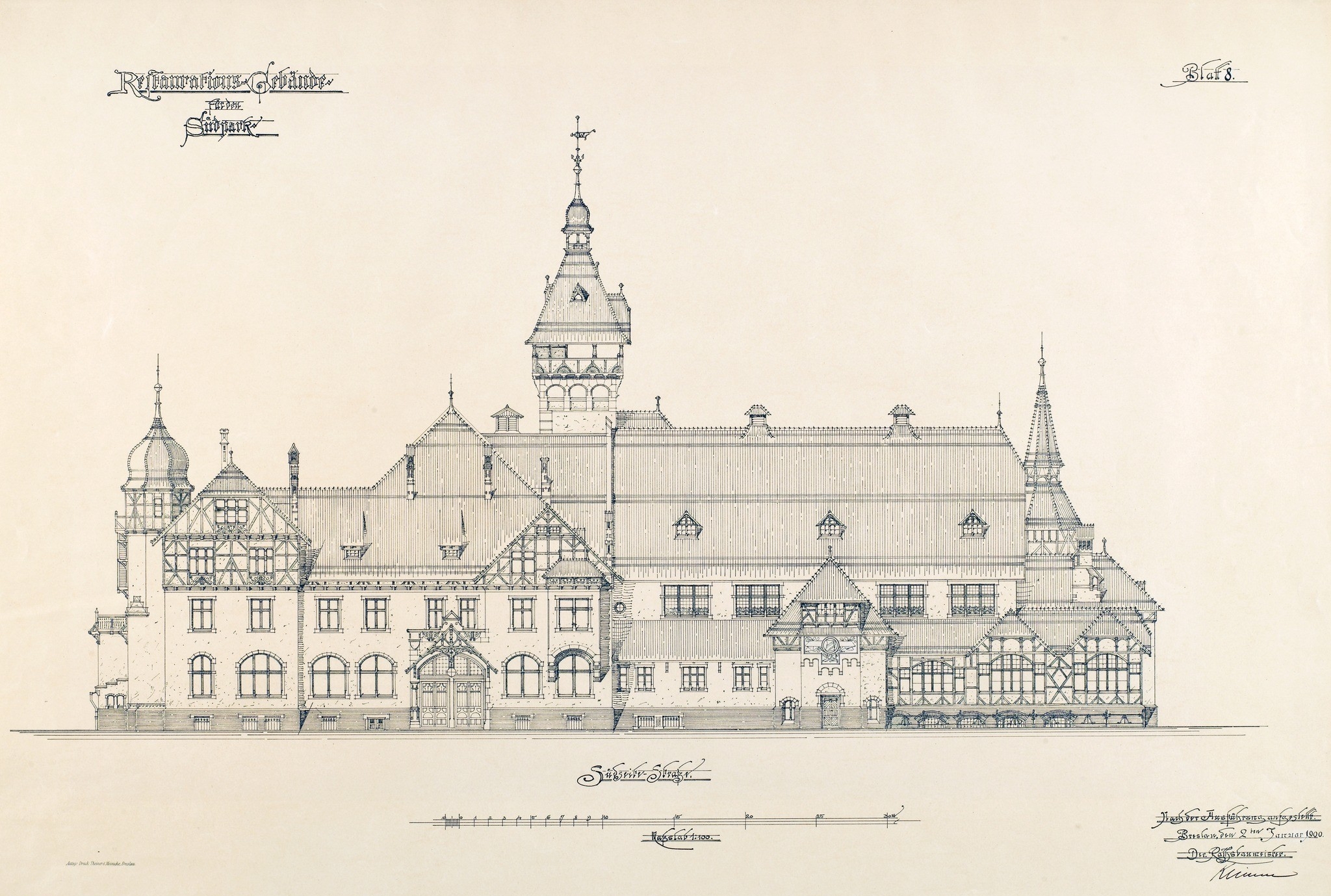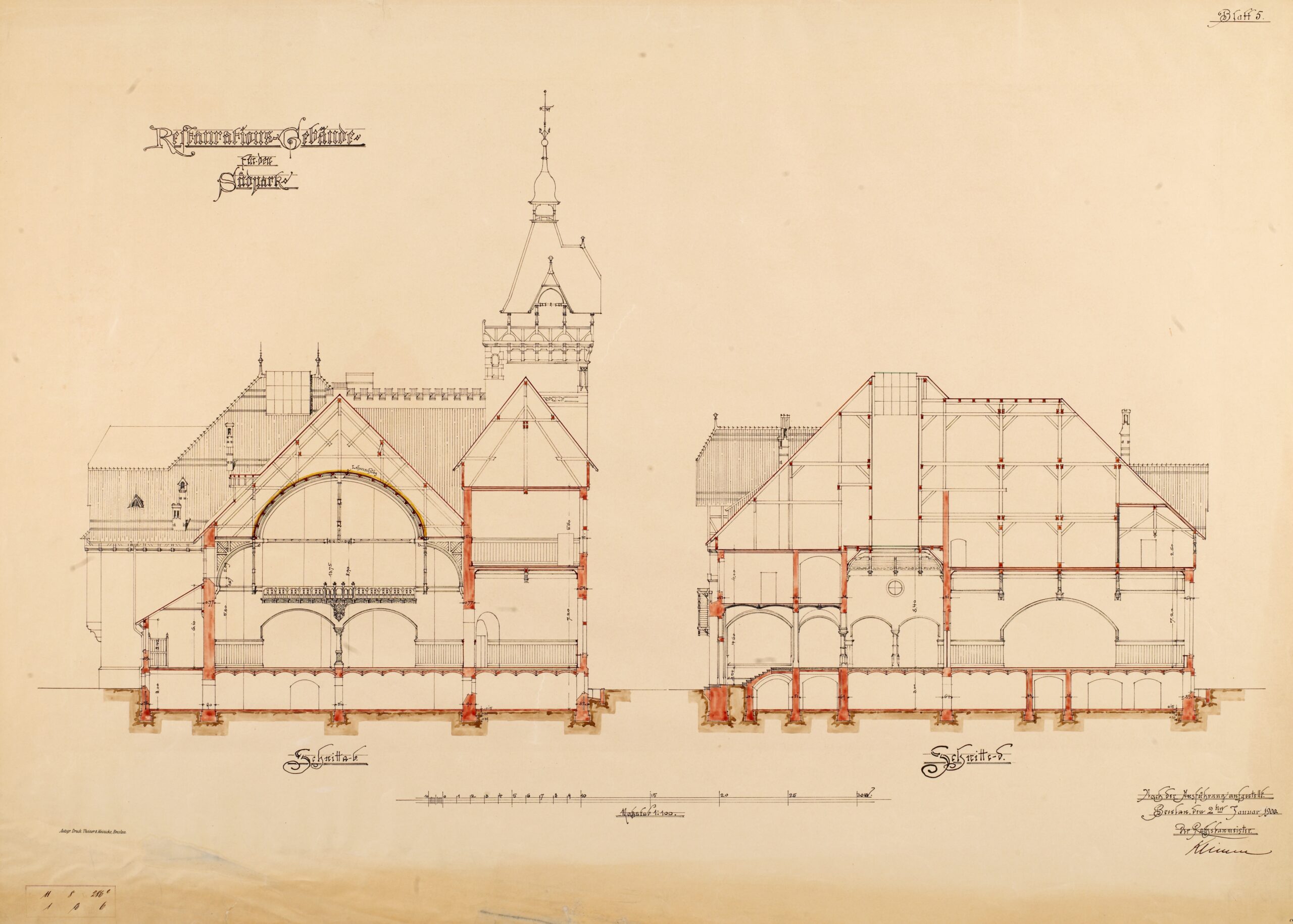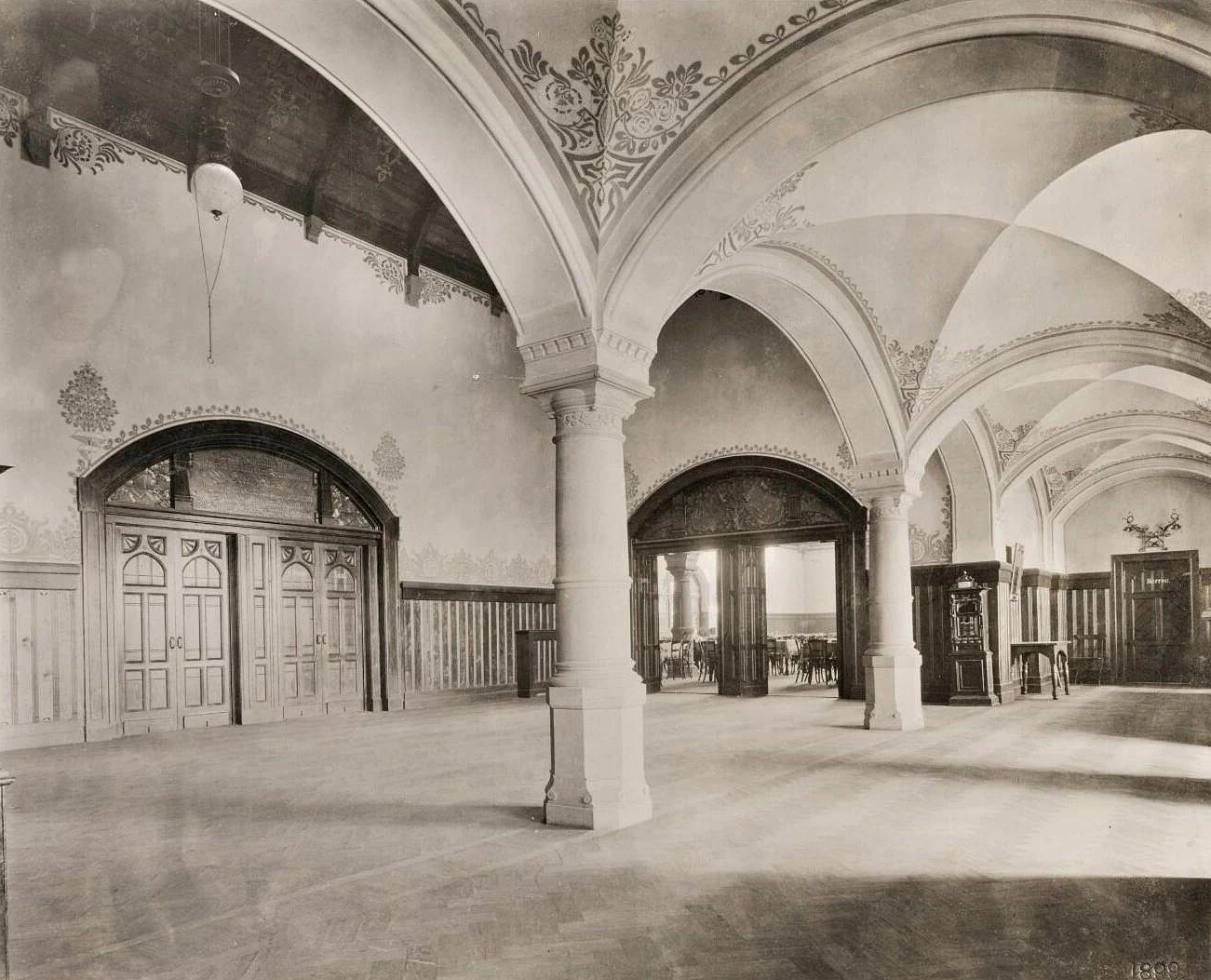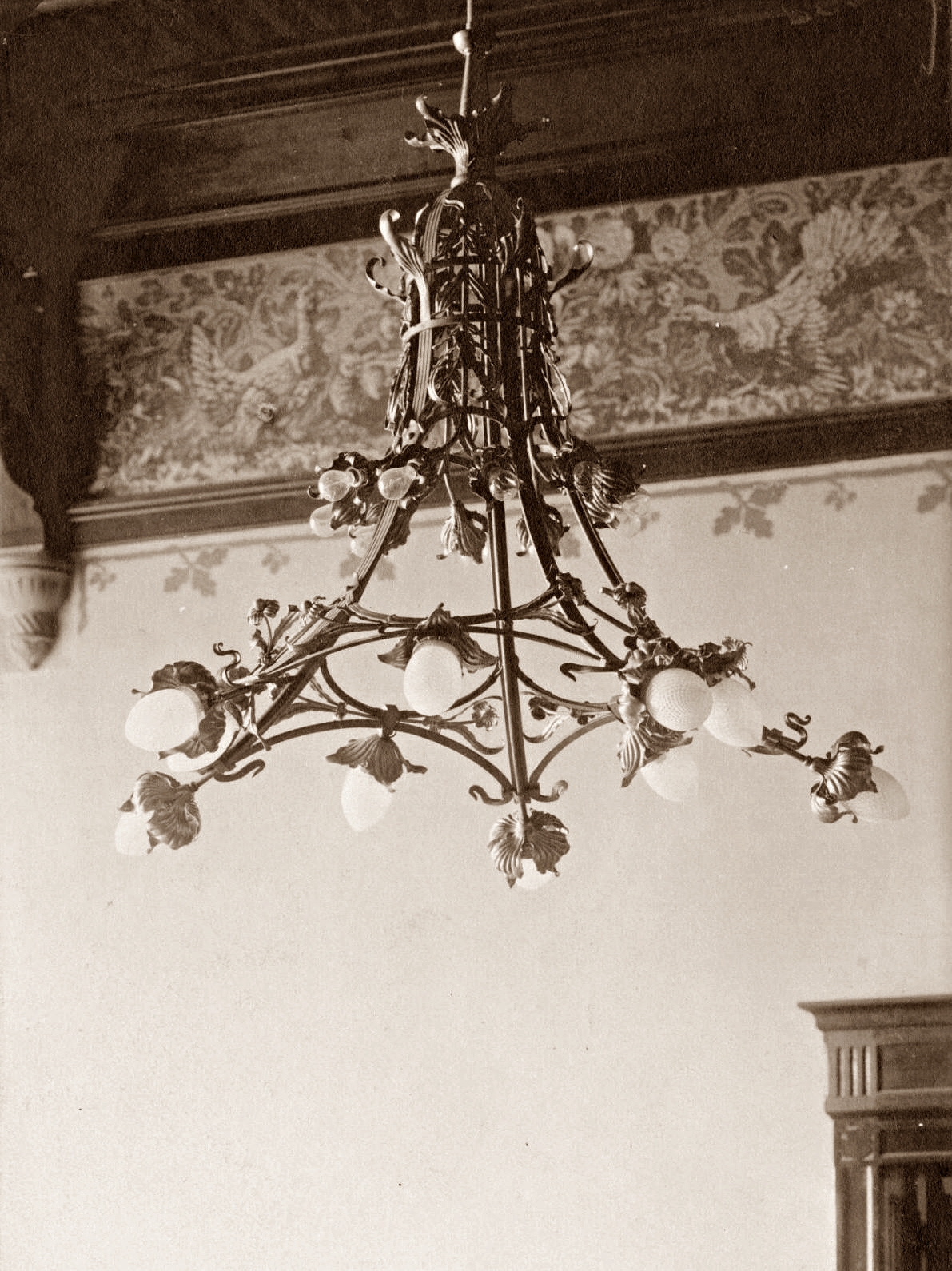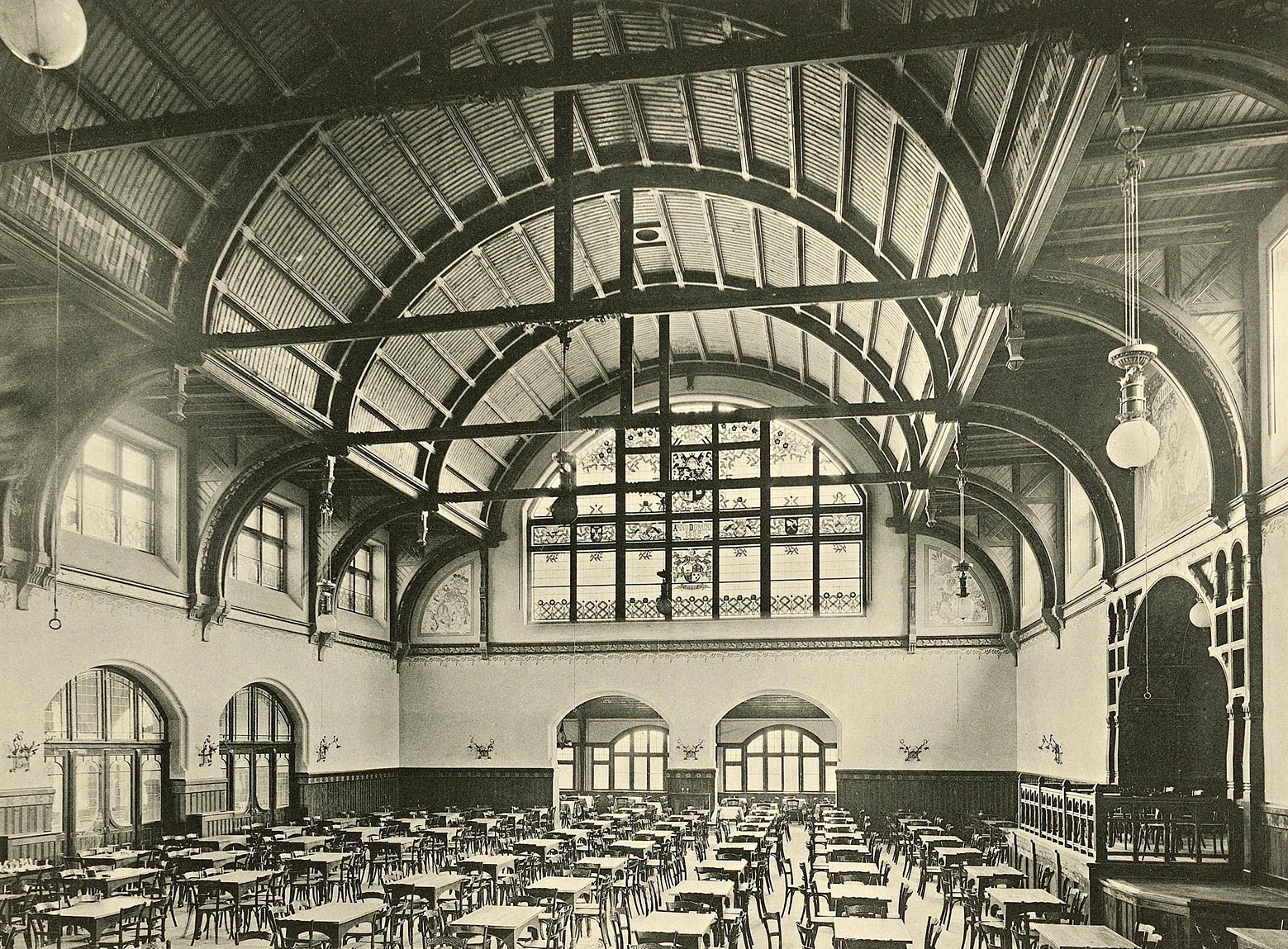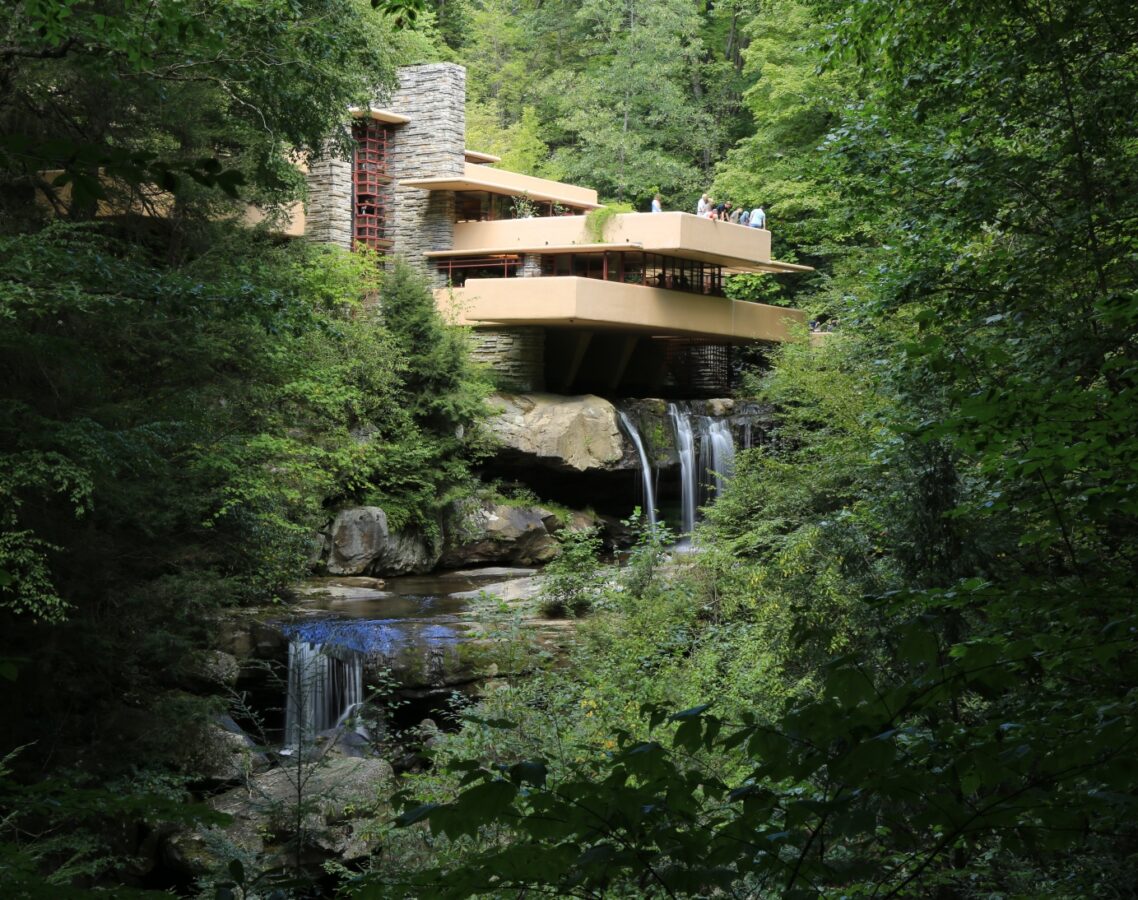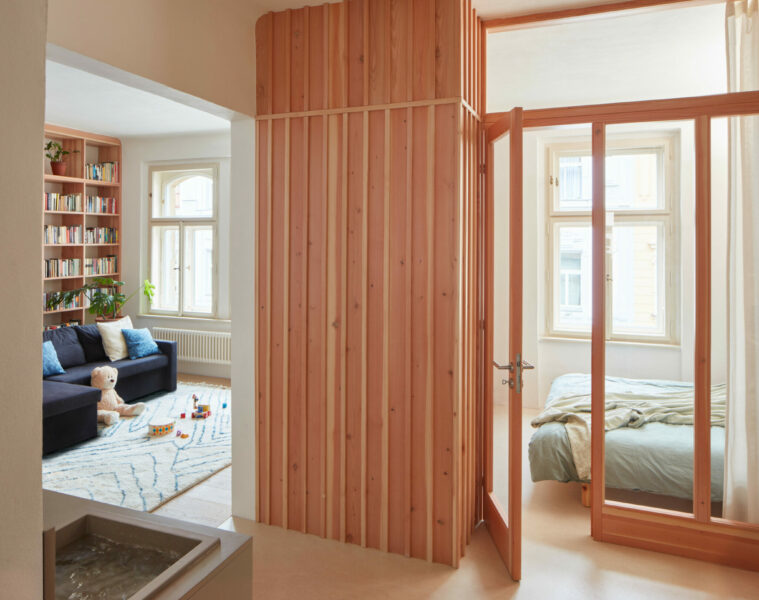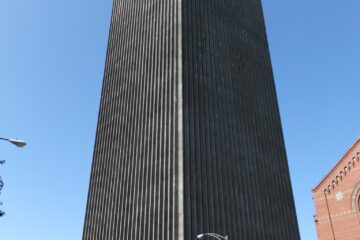Haase’s restaurant in the South Park is one of Wrocław’s legendary dining establishments. The impressive palace-like building with beautiful terraces was built at the end of the 19th century for the Wroclaw brewer Georg Haase. At the time, the restaurant’s grandeur and romantic location by the pond attracted crowds. Destroyed during the Second World War, the building shared the fate of all park public buildings.
The South Park (German: Südpark), located in Krzyki, between Sudecka, Karkonoska and Januszowicka streets, is one of the largest and most picturesque in the entire city. In the past, the park’s skyline and buildings looked very different.
Haase’s restaurant and Schottländer’s pavilion as seen from the pond on a postcard from the early 20th century. Source: Österreichischen Nationalbibliothek
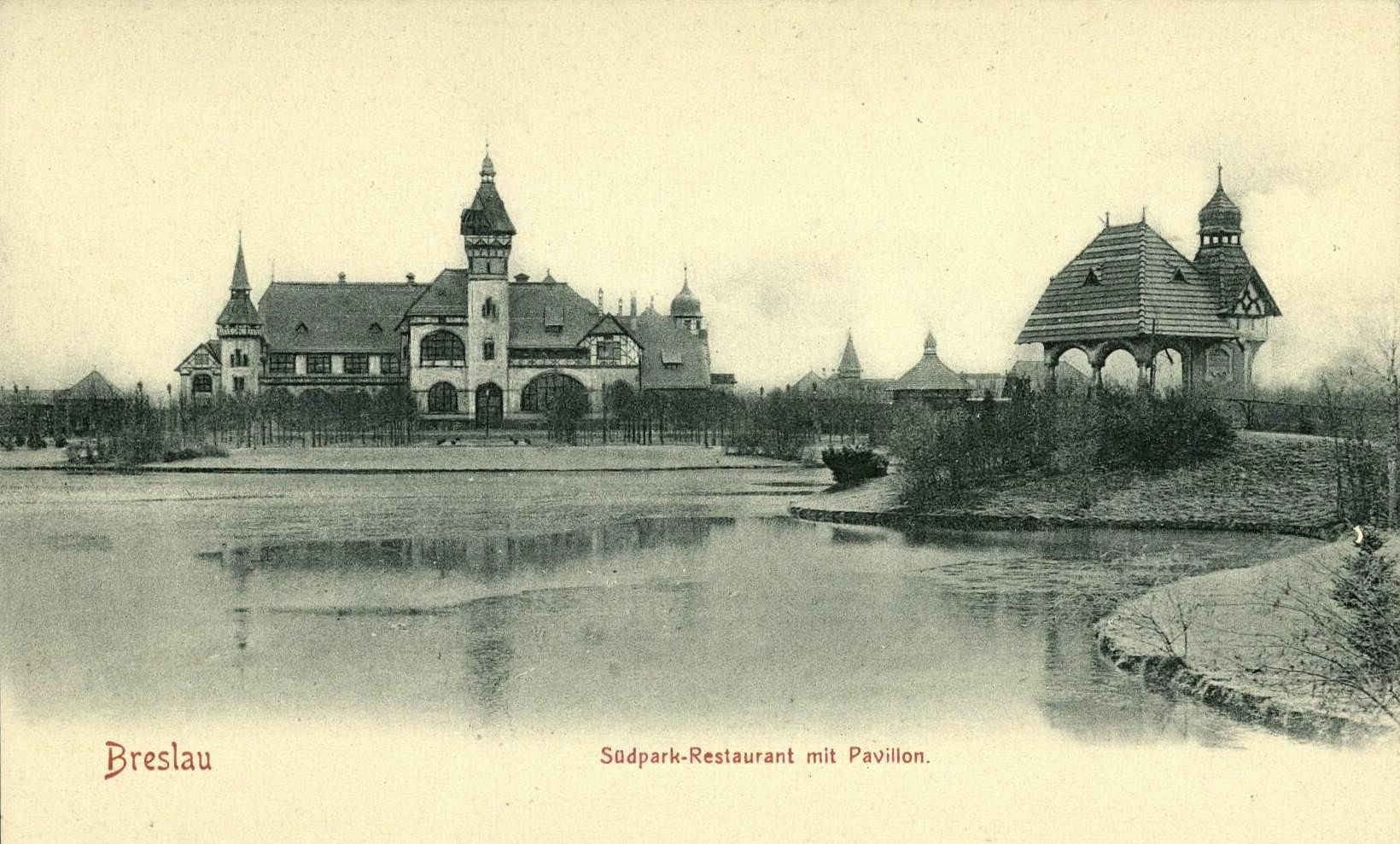
The park was originally called Municipal Park. It was established in 1877 on land donated by Julius Schottländer, a well-known Wrocław merchant and philanthropist, in return for connecting Borek to the city’s gas, water and sewage networks. In 1891, the city councillors held an international competition for the development of the green area. In the end, the concept of landscape architect Hugo Richter and botanist Ferdinand Cohn was realised, who transferred gardening solutions straight from Cologne to Wrocław. They created a landscaped park with meadows and a large pond with a boat hire facility, over which one of the city’s largest catering establishments soon stood – the famous Haase restaurant, owner of the nearby brewery. The building, designed by the well-known architect Karl Klimm (the author of the water tower on Wiśniowa Avenue, which we wrote about HERE), was one of the few multi-storey buildings of this type in pre-war Breslau.
The restaurant in the early 20th century and the same place today. Source: United States Library of Congress and My Former Breslau
The years 1911 and 2023 – view from Ludwig Lansberg’s terrace (Landsberg Terrasse) to the site where the Schottländer Pavilion used to be. Source: My former Wrocław
In his works, the architect represented a very rich range of historicist forms with Art Nouveau elements. The body of the restaurant was dominated by a tower with the inscription “Anno 1898” indicating the date of construction. Both the façade and interiors were finished with wood and light-coloured plaster. Large windows featured stained glass, and the walls of the restaurant’s rooms were decorated with frescoes of flora and fauna motifs and intricate woodwork. In addition to the tall tower, smaller, equally soaring structures appeared on the roof. Part of the façade was built in the characteristic technique of so-called half-timbering, which gave the building a romantic and homely expression. In addition to the two above-ground levels, it also had at least two floors below ground. It is suspected that these cellars were not just for catering purposes. According to researchers into the history of Breslau, both this restaurant and the Schottländer Pavilion were meeting places for Breslau’s SS officers and intelligence agents – in a special lodge separated from the rest of the building by soundproof glass.
View of the restaurant from across the pond in the early 20th century and the same place today. Source: My old Wrocław
1947 and 2021 Borek district and South Park. The ruins of Haase’s restaurant were demolished and two islands appeared on the pond after the war. Source: Central Military Archives and Google Maps
After the end of the war, South Park changed almost beyond recognition, losing all the public facilities and the sports section. Haase’s mostly wooden restaurant burned down in 1945. Its burnt-out walls were demolished shortly afterwards. During construction work in 2004, among other things, boilers from the restaurant kitchen, crockery and cutlery, and the remains of the cellars were unearthed. Today there is a trellis and a statue of Chopin.
Since 1995, the park has had the status of a natural monument. It is home to 109 plant species.
Source: wroclaw.naszemiasto.pl, kochamwroclaw.pl, My old Wrocław
Read also: Architecture in Poland | Places, Squares, Parks | History | Wrocław | City

